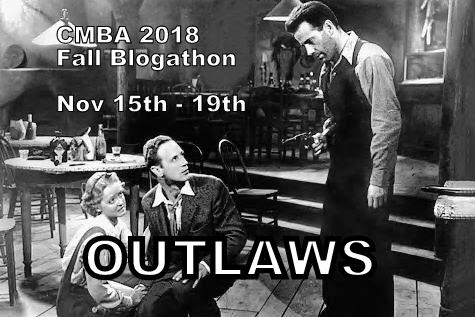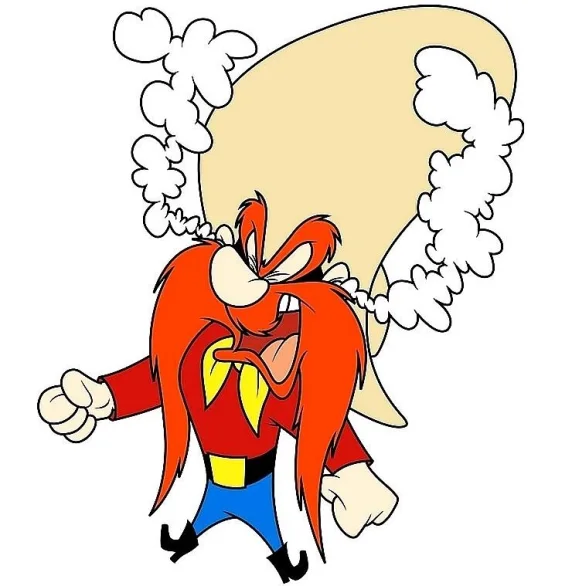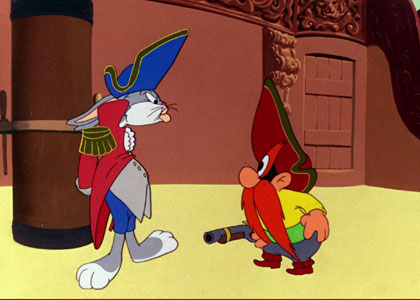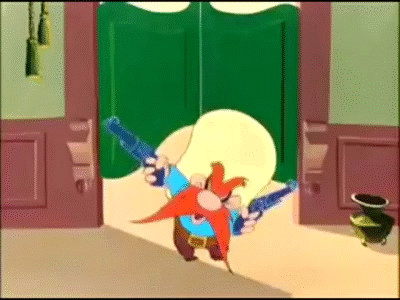How much do we love our heroes in movies, the characters who display courage in the face of insurmountable odds and who sacrifice all for the greater good? I’d say we love them a lot. These characters have made for some of the greatest stories ever told. The screen has featured them since the birth of motion pictures. Their stories are replete with adventure and wonder and love. They are who we root for and want to be. But where would our heroes be without outlaws? Indeed, they’d not be heroes at all. Instead they’d be ordinary characters with no one to save and nothing to conquer. Their feats would be for naught and we’d pass by them by without a moment’s glance. It is the outlaw then that makes the hero. It is the outlaw that deserves praise for the stories we hold dear. It is the outlaw that is honored by the Classic Movie Blog Association (CMBA) 2018 Fall Blogathon.

It was not easy to come up with an outlaw to honor for this important event given there are so many worthy ones to consider, but in the end I went with one of the greatest to ever appear on film. My outlaw goes by many names, several of which I mention as I describe a few of his screen accomplishments, but for now let’s just call him Samuel Michelangelo Rosenbaum, better known as Yosemite Sam.

Like most legendary animated characters, Yosemite Sam was born of a combination of talent. I’ve read that Sam was first drawn by Michael Maltese, a long-time storyboard artist and screenwriter for Warner Bros. While that may be true it is the legendary director and animator Isadore “Friz” Freleng who is credited with creating Yosemite Sam (among several other animation super stars) and ultimately bringing him to life.
Friz Freleng is best remembered for his work on the Looney Tunes and Merrie Melodies series of cartoons produced by Warner Bros. Animation. Freleng was one of the oldest employees at the studio, the most productive, and ultimately his work received the most awards and nominations. It is said that the idea for Yosemite Sam came from Freleng who wanted a stronger antagonist for star, Bugs Bunny, than the gentle Elmer Fudd. Freleng described Sam as “a two-foot cowboy with long, red hair.” Freleng’s daughters have mentioned that he based Sam on himself. Freleng was of short stature, had red hair, and, according to the daughters, was known to have a bit of a temper.
The man of a thousand voices, Mel Blanc, usually came up with his characters’ voices when the animators showed him a picture of the character and explained what he or she would do. According to Chuck Jones the process usually took about an hour before they were set to shoot, which is astounding. Yosemite Sam’s voice, however, took a bit longer for Blanc to conceive. Friz Freleng had introduced Blanc to Yosemite Sam. Blanc tried a small voice at first but felt that didn’t work. One day the actor had a fit of road rage on his way to work and was inspired to yell at the top of his voice for Sam that day. The match was perfect. That said, the character took a terrible toll on Blanc’s voice and he ended up always recording Sam’s voice last at every session so he could rest his voice over night. Blanc voiced Yosemite Sam from 1945 until 1987. Mel Blanc’s talent and Friz Freleng’s inspired direction would help make Yosemite Sam one of the most reliable character actors in film history and one of the most memorable interpreters of the outlaw ever to appear on film.

Yosemite Sam appeared in over 30 animated short films during the golden age of animation, which for my money lasted through the early 1960s. As is the case with other notable animated characters, Sam had predecessors, or characters that resembled him before he made his official debut. You’ll notice, for instance, that a cowboy named Cottontail Smith voiced by Mel Blanc in Chuck Jones’ Super-Rabbit (1943) sounds a lot like Yosemite Sam and he hates rabbits just as much. In 1944, Friz Freleng directed Stage Door Cartoon, which co-stars Elmer Fudd as Bugs Bunny’s nemesis, but also features a sheriff that sounds a lot like Sam except he has a heavy Southern accent. The sheriff also has the same physical build as Yosemite Sam. Our star and the lawless fugitive aka outlaw that is the subject of this presentation made his official debut in 1945 with Friz Freleng’s Hare Trigger.
Before I get to Yosemite Sam’s actual work, I think it’s important to mention what he brought to the table. As with all character actors Sam could be relied upon for specific attributes that made him instantly recognizable. I’ve already mentioned his “look,” which remained constant throughout his career except for costuming, of course. In that regard the offerings are always colorful depictions of the kind of vibrancy brought forth by the Warner Bros. talent pool. As far as characterization you expect the same kind of stimulating entertainment at every turn. That is, a tough, determined opponent to Bugs Bunny primarily, but who could focus that determination on others as well. Sam has a violent disposition, in contrast to Fudd who is of a more passive nature. Then, of course, you have the loud, brash voice and cantankerous personality, which make Sam’s characters typical outlaws. His aggression, which often means he’s easy on the trigger, also poses a wonderful contrast to Bugs’ cool nature. Like Elmer Fudd, Yosemite Sam proves an easy target for the rabbit as well often falling victim to his pranks. Sam’s inability to turn down a Bugs’ challenge also makes for enjoyable escapades. Finally, Yosemite Sam will undoubtedly bring an unusually strong sense of self to every role. I say unusual because it is far more likely that he’ll end up flattened in a movie than it is that he ends up the victor. Still, his self-confidence is one of the reasons Sam is so enjoyable to watch. He will always offer a colorful way to describe himself as you’ll see.

As Hare Trigger begins we see Bugs Bunny playing the banjo, hanging out in the mail car of the Super Chief train when the notorious Yosemite Sam gets onboard intent on robbing the train. Bugs doesn’t know who Sam is, but the infamous robber is wanted for a $5000 reward. That’s $70,245.83 smackaroonies in today’s vernacular. In other words, he’s no joke, “I’m Yosemite Sam,” he says in that loud growl of a voice, “the meanest, toughest, rip-roarin‘-est, Edward Everett Horton-est hombre that ever packed a six-shooter!” And that’s that. The Wild West would never be the same again nor would Sam after each encounter with the wily rabbit.

Bugs and Sam go at it with a suspense-filled gunfight that takes them through various train cars and on top of the train where in the end it seems Bugs has met his match, but then he reminds us that…well, he’s Bugs Bunny. There is no defeating that rabbit.
Hare Trigger is as important and entertaining a movie debut as any actor can claim. Yet, for some reason it took two years for Sam to star in another cartoon. When Freleng brought him back Yosemite Sam took on Daffy Duck along with Sam’s brother Orville. Friz Freleng directed these actors in Along Came Daffy, a silly romp in which the Yosemite brothers are starving in a cabin when along comes Daffy to sell them a cook book. It doesn’t take long for the duck to become the object of the two men’s lust for food. Along Came Daffy is the first of two outings for Sam wherein he doesn’t battle the rabbit. The second is Freleng’s Honey’s Money from 1962. In this outing Sam marries a rich widow for her money and ends up a hen-pecked mess. In both of these cartoons Sam is missing some of the gruff charms he possesses opposite Bugs Bunny. When Sam is able to corral great character parts he really shows what he’s made of as is the case with Freleng’s Buccaneer Bunny (1948), the first of three shorts featuring Sam as an (outlaw) pirate.
In Buccaneer Bunny Yosemite Sam becomes Seagoing Sam, “the blood-thirstiest, shoot ’em first-iest, doggone worst-iest buccaneer that’s ever sailed the Spanish main!” In case you’re wondering exactly what kind of outlaw a pirate is, it’s a person who robs or commits illegal violence at sea or on the shores of the sea, versus a regular old outlaw on land.
Anyway, in attempting to bury his treasure, Sam digs into Bugs Bunny’s rabbit hole. The next thing you know the two are on Sam’s pirate ship with Bugs disguised as Captain Bligh from Mutiny on the Bounty looking and sounding just like Charles Laughton in Frank Lloyd’s 1935 film. Impressed with the impersonation, Sam is tricked into doing Bugs’ bidding all over the place. In fact, Buccaneer Bunny is loaded with familiar gags all at Sam’s expense and is a hoot from start to finish.

Sam plays another pirate in Freleng’s Mutiny on the Bunny from 1950 in which he delivers one of his best performances as Shanghai Sam. This time he’s a particularly dastardly captain of a ship whose crew abandons him. Desperate for a new crew Sam announces free trips around the world, which entices Bugs Bunny to sign up. Sam is rough and tough, “Ooh, belay there, you long-eared galoot! Get aloft and furl the tatter-sole top gallants before I keelhauls you!” he threatens, but it takes very little for him to be made a fool of by the rabbit. Sam can bark all the orders he wants, but he ends up scrubbing the shop’s deck, abandoning ship, and even looking for buried treasure on the ship. In the end Sam is forced to wave the white flag in surrender.
Yosemite Sam’s last stint as pirate is in Captain Hareblower (1954) also directed by Freleng. This is a lesser Merrie Melodies outing. Pirate Sam is in a great mood when this story opens as he’s navigating his ship singing “Blow the Man Down.” Suddenly he comes across another ship that he has to have all to himself. Sam fires a warning shot causing the crew of the other ship to abandon it in fear of the notorious Pirate Sam leaving it with one occupant, Bugs Bunny. Of course, Bugs doesn’t surrender. Instead he takes Sam on even though the Pirate threatens with a determined, “I got you outnumbered one to one!” And the fight is long and arduous with every explosion landed by Sam countered with several landed by Bugs. It’s a bit tedious, but effective. In the end, however, what’s interesting about this animated short is that Bugs Bunny gets his, which is a rare occurrence.
Throughout his illustrious career, Yosemite Sam played many types of characters. He was not a one-note Johnny, but he was typed to a certain degree having to exhibit the types of characteristics previously mentioned and almost always played some type of outlaw. Still, it’s worth noting Sam’s film occupations included such variations as viking, prison guard, confederate soldier, mountain climber, and prospector. The latter is beautifully illustrated in 1952’s 14 Carrot Rabbit, which takes us to the Klondike where men are men and women are women…a darn good arrangement. In this enjoyable Freleng outing Sam is Chillicothe Sam, “the roughest, toughest, rootinest, shootinest claim-jumper that ever jumped a claim.” The action starts immediately in this one when Sam pops up with gun threatening to steal an old man’s gold. Successful, Sam goes to the Last Chance Saloon to trade in the gold and it turns out his efforts yield him a measly ten bucks. Naturally Sam is outraged that a man can’t even make a dishonest living anymore as he watches Bugs Bunny enter the establishment with a huge chunk of gold he exchanges for carrots. Sam learns that Bugs is successful at finding gold because the rabbit gets a weird feeling when he’s near the valuable commodity. Recognizing the possibilities, Sam offers Bugs his undying friendship – and a partnership. As expected, Bugs agrees and then proceeds to take Sam on an unsuccessful gold expedition across these United States.

14 Carrot Rabbit is not great compared to several of the other cartoons mentioned in this post, but it is notable in the career of Yosemite Sam. You see, despite the many outlaw roles Yosemite Sam played throughout his career, his characters rarely pay for their misdeeds. Yes, Bugs Bunny makes him pay dearly at every turn, but law enforcement never gets him. Or almost never because enforcement does come for Sam in 14 Carrot Rabbit. At the end of the journey Bugs Bunny leads Sam to the U.S. Gold Reserve where he digs in desperation and is unexpectedly taken away by military police. He has a similar fate in Freleng’s Hare Lift, which was also released in 1952. Makes one wonder what that year had against Yosemite Sam.
It is the opinion of this fan that despite Yosemite Sam’s vast array of outlaw roles, the most enjoyable are those where he portrays stereotypical outlaws. The bank robbers previously mentioned are two of them and the great Western adventures in which he starred are the others. One Westerns of note is Freleng’s Wild and Woolly Hare from 1959, which features an impressive opening shot across the town of Canasta Flats past the Last Chance Saloon and the Next To The Last Chance Saloon and pulls into the Fat Chance Saloon where the action takes place. It’s not long before Sam, “the fastest gun North, South, East, aaaaaaaand West of the Pecos!” is taken outside by Bugs Bunny for what turns out to be a train duel. The scenes in the saloon are enjoyable, classic Bugs-Yosemite fare, but the story loses steam after a while. The better Western offering and probably this fan’s favorite Bugs-Yosemite cartoon of all is Freleng’s Bugs Bunny Rides Again (1948).
The best Yosemite Sam entrances are the ones when he swings open saloon doors and the best of those is the one in Bugs Bunny Rides Again. There’s usually a huge build-up following by the sound of big steps attached to tiny feet and legs before the doors swing open. Then the loud mouth and production take over. In the case of Bugs Bunny Rides Again, Sam enters slinging both guns into the air confirming the whispers of the other patrons, “Yeah, Yosemite Sam – the roughest, toughest he-man stuffest hombre that’s ever crossed the Rio Grande. An’ I ain’t no namby-pamby.”

After shootin’ up the place Yosemite vows to shoot up any critter than tries to tame him. And there standing, rolling a cigarette is Bugs Bunny. As we know, the rabbit pushes the easily aggravated Sam to the limit and usually gets the best of him, but in this short it is done in hilarious fashion. Bugs Bunny Rides Again is, in this fan’s estimation, the best pairings of these two actors. Among my favorite scenes is the one where Bugs goes into an entertaining dance routine after Sam with gun in hand demands him to dance. Bugs then turns the table and Sam goes into a dance routine. He’s so easy.
Anyway, after a few terrific chase sequences Bugs Bunny decides they are getting nowhere. The two then decide to do like the Western pictures – whoever loses a card game has to get out of town.
I’ve touched upon but a few of the highlights from the career of Yosemite Sam and I hope you now realize that he was much more than just a loud-mouthed actor with a hatred for rabbits. His staying power should be enough to convince you. Following Sam’s theatrical popularity, he made appearances in several television specials throughout the 1980s and in three Looney Tunes feature films. Yosemite Sam also had his own comic series. Well, ok, he shared billing with Bugs Bunny there too, but the point is that for well over four decades this guy proved his hot air wasn’t just hot air. Sam was a well-rounded entertainer who took his job seriously and I hope that as you read about outlaws in the CMBA blogathon, you consider Yosemite Sam as the real deal. He wasn’t afraid to stand up for what he believed either as he illustrated in Freleng’s Rabbit Every Monday (1951).
Bugs Bunny is singing a beautiful rendition of one of my favorite songs, “It’s Magic” by Jule Styne and Sammy Cahn, to his beloved carrots when Yosemite Sam approaches. With signature concentration Sam zeroes in on the carrot smell astutely recognizing that the presence of carrot smell can only mean a rabbit is close by. Step by careful step Sam gets closer to his goal when he is distracted by a theatergoer who rudely stands to leave during this vital moment. Sam doesn’t miss a beat turning quickly with gun pointed toward the man demanding that he sit back down immediately. The man cowers back to his seat, but not before we are impressed with what we have just seen. Yosemite Sam will not allow anyone to leave and warn the rabbit of his plans. That’s admirable and should be applauded. To my knowledge no other movie outlaw has ever dared to threaten an audience member for such rudeness. Going forward when you think of that outlaw, you can only be referring to Yosemite Sam.

◊
Please be sure to visit the outlaws at the CMBA…er…I mean, the outlaw posts of my co-conspirators at the CMBA for OUTLAWS, the Fall 2018 Blogathon!

Indeed. Certainly not a namby-pamby. Sam worked wherever and whenever his unique talents were needed, but from now on I cannot think of him but as “that outlaw.” (Wipes away one solitary, sentimental tear then turns and yells at the cats for ruining the moment.)
You get it, Paddy. You just do.
An Oldie but a Goodie! 🙂
You’re darn tootin’!
There’s something about redheads, right? They skirt the boundaries of (law, sexiness, humor… fill in the blank). Sam is true to his roots – he is the outlaw deluxe (and who knew he was Jewish?). He always brought the spice to the meal and proved himself a lot more lovable that some of Bugs’ other foes. Great post, my dear – enjoyed it so much I can’t stop smiling. You really hit a home run.
Thanks, Marsha! Glad you liked this. You’re absolutely right, it’s a redhead thing!
What a great choice for the Outlaw Blogathon. I thoroughly enjoyed your post, which was a chance to go down Memory Lane for me.
Thank you! Served my memory well too. 🙂